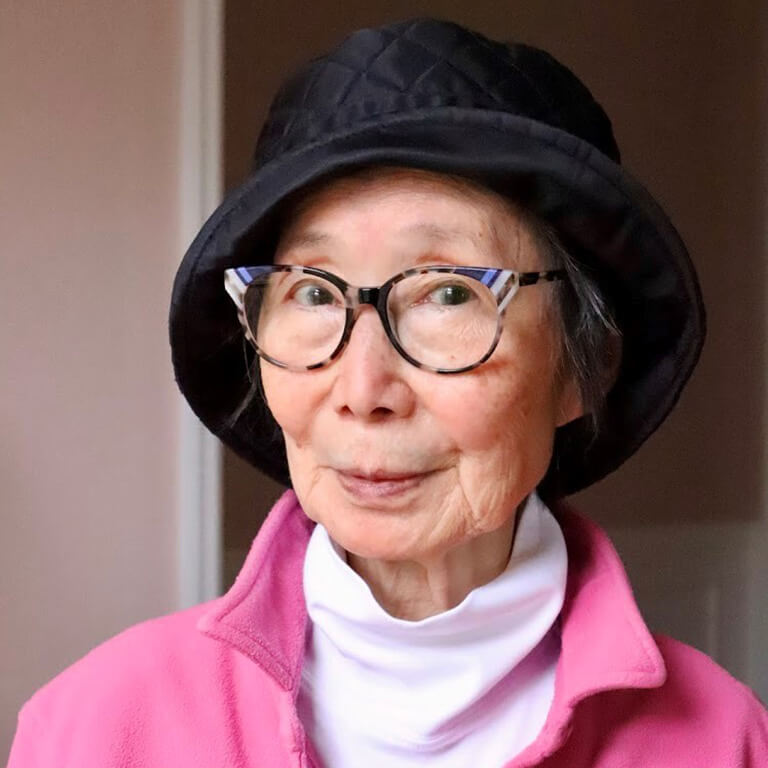- Email:
- joness@iu.edu

Education
- PhD, Comparative Literature, University of Washington, 1979
Research Interests
- 18th century comparative literature and arts
- Early modern (Edo-period) Japanese literature and arts
- Literary theory and aesthetics
- Theory and Practice of Translation
Experience
- Indiana University, Bloomington, lecturer to Professor Emerita in Comparative Literature, East Asisan Languages and Cultures, and Film Studies (1978-2007)
- Indiana University Institute for Advanced Study, Residential Fellow, 2008-2020
Rikkyo University, Tokyo, Visiting Research Fellow (1998-1999) - International Research Center for Japanese Studies, Kyoto, Visiting Professor (1997-1998)
- University of Tokyo Visiting Research Fellow (May 1989-December 1990)
- Harvard University Japan Institute Postdoctoral Fellow (1982-1983)
- Harvard University Mary Ingraham Bunting Fellow (1982-1983)
Awards and Distinctions
- Lindsley and Masao Miyoshi Lifetime Achievement Prize, Donald Keene Center for Japanese Culture, Columbia University, 2019
- Trustees Teaching Award, 2002
- Grants and fellowships from the National Endowment for the Humanities, Toshiba International Foundation, the American Council of Learned Societies, the Social Science Research Council, the Japan Foundation, Suntory Foundation and Indiana University, for varied time periods between 1979 and 2021
Publication Highlights
- Editor-in-chief and translator featured in three-volume anthology: (1) with Kenji Watanabe, Japan advisor, An Edo Anthology: Literature from Japan’s Mega City, 1750-1850 (2013); (2) with Charles Inouye, coeditor, A Tokyo Anthology: Literature from Japan’s Modern Metropolis, 1850-1920 (2017); and, with Adam L. Kern, coeditor, and Kenji Watanabe, Japan advisor, A Kamigata Anthology: Literature from Japan’s Metropolitan Centers, 1600-1750 (2020).
- Author and translator, The Shirokoya Scandal: Two Views of the Case Judged by Magistrate Ōoka Tadasuke, 2010
- Author, “Vanishing Boundaries: Translation in a Multilingual World,” in Sumie Jones and Breon Mitchell, coeditors, special issue on translation, Yearbook of Comparative and General Literature, No. 54 (2008)
- Editor and contributor, Imaging/ Reading Eros: Sexuality and Late Edo Culture (conference proceedings), 1996
- Author, “Language in Crisis: Ogyū Sorai’s Philological Thought and Hiraga Gennai’s Creative Practice,” in Earl Miner, ed., Principles of Classical Japanese Literature (1985)
- Author, “William Hogarth and Kitao Masanobu: Reading Eighteenth-Century Pictorial Narratives” (1985)
Born in Japan and graduating from Tokyo Woman's Christian University and Waseda University with a BA in English literature, I came to the U.S. as a Fulbright fellow. At the University of Washington, Seattle, the fun of taking part in graduate seminars turned me into an eternal graduate student, a member of a species that flourished during the 70s. I drifted from American drama to 18th-century English and French studies and further onto Chinese literature, all of which eventually led me to Japanese literature. With only one chapter of my dissertation in hand, I was hired by Indiana University, which forced me to finish writing the thing rather in spite of myself. I had a split appointment in Comparative Literature and East Asian Languages and Cultures. I began as a teacher of introductory courses on “Oriental” literatures for the Comparative Literature department and elementary courses in Japanese language for the East Asian department. As soon as I became an assistant professor, I was permitted to teach graduate courses and direct dissertations (thanks, perhaps, to the shortage of labor in both departments). I had the freedom to move around intellectually: always a Freudian since I was an undergraduate, I moved away at this point from New Criticism to semiotics. Kinsey Institute’s holdings supported my research in comparative arts and in Edo-period Japanese literature. I was also permitted to invent new courses and soon became responsible for the theory and genre courses for the graduate program in Comparative Literature and for the seminars in classical and early modern Japanese literature for the East Asian department. As I grew older, I became increasingly dialogic in my teaching: I incorporated prospective students’ ideas into my syllabi and shaped each class session as a gathering of minds surrounding one chosen “specialist” among the students.
I am inclined to work with other people and my belief in multidisciplinary investigation on any topic led me to direct many collaborative projects. The Tale of Genji conference and exhibition, which I co-organized with Eugene Eoyang in 1982, and the Sexuality and Edo Culture conference and exhibitions, which I organized in 1995, are among the largest events I have planned and managed. By joining the Film Studies program and by cross listing my kabuki course with the Department of Theatre and Drama, I expanded my teaching territory far and wide. I enjoyed team teaching with European medievalist Clifford Flanigan an upper-level undergraduate course on “Courtly Love, East and West,” which was a case of successful collaboration. A generously funded course on “Multidisciplinary Approaches to Kurosawa’s Films,” taught by historian Jurgis Elisonas, film music specialist David Neumeyer, and me, representing literary and film criticism, resulted in an all-day workshop on Kurosawa at the Tokyo meeting (the first ever outside Europe and the U.S.) of the International Comparative Literature Association. Looking back, I realize that teaching is addictive. Once you are drawn into it, it occupies your attention completely. You plan big events in order to stimulate your students, win grants to help their finances, and stay up all night writing recommendations. You don’t have any time to work on the four book projects that were on-going for decades.
Just before I reached retirement--that glorious stage where one expects to have the leisure to read Proust to the end—I began working on my anthology project. Now that the three volumes are out and none of my students is nearby, what to do next? I have donated over 10,000 volumes of books over the past four years, shredded the manuscripts for the four books, and have now started to reread Tristram Shandy—not Proust.

